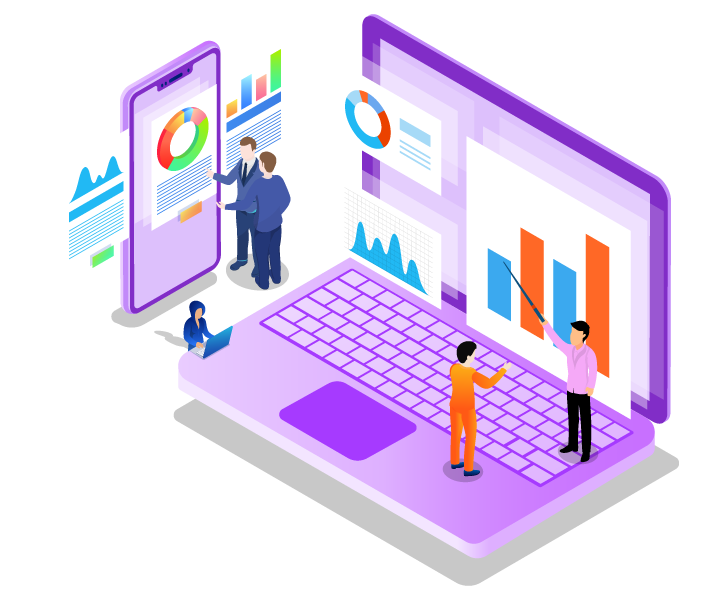In the rapidly changing working environment of today the way we manage and sustaining devices has changed. In the current shift to hybrid and remote work arrangements, the conventional method of dispersing laptops in the office has been replaced by a more operationally complex workflow, referred to Device Lifecycle Management (DLM). Managed Desktop Service (MDS) is now a key component of this shift, assisting to streamline the process of companies and enhance the user experience.

Device Lifecycle Management, often referred to as DLM, encompasses the entire journey of a device from acquisition to retirement. This involves a number of steps, including procuring as well as provisioning maintenance and disposal at the conclusion of the lifespan. While DLM was once a relatively simple process in conventional office settings However, the advent of remote work has created layers of complexity and issues.
In this modern environment IT managers have to deal with the challenge of asset management and logistics at every stage of the device’s lifecycle. This is mainly driven by the desire to cater for the diverse demands of remote workers as well as employees who are hybrid. It has become essential for businesses to use effective strategies. Managed Desktop Service is one of the most sought-after.
Remote work is supported by Managed Desktop Services
Managed Desktop Service (or MDS) is a extensive software application designed to simplify management of the devices of users. This service offers a holistic method for provisioning, managing and assisting devices, which makes it a vital instrument for IT administrators. Managed Desktop Service helps organizations to overcome the difficulties of remote working.
Improving End-User Experiences One of the main goals of Managed Desktop Service is to enhance the experience of users. It tackles common problems that remote workers encounter, such as slow repairs, a delay in equipment installation, and long software upgrades. MDS improves job satisfaction and productivity by ensuring that employees are able to access the tools and resources they need when they are required.
Managed Desktop Service streamlines the provisioning of new equipment for remote employees. With MDS, organizations can efficiently provide laptops and other essential equipment to new employees and ensure that they are equipped with the tools they require right from the beginning. This eliminates the frustration of employees waiting for their devices and enduring delays to begin their work.
Managed Desktop Service allows IT teams to manage updates to software patches and patches more efficiently. You can schedule updates in time periods that are not disruptive, which guarantees that employees won’t be disrupted when they are performing their important work. This eliminates the possibility of employees being interrupted during important meetings or video calls.
Rapid Repairs and Replacements: In a remote workplace the prompt repair or replacement of malfunctioning devices is critical. Managed Desktop Service providers often have solid support systems, ensuring that employees receive prompt assistance when their devices have problems. This can reduce downtime and lowers the likelihood that cybersecurity-related threats could arise from personal devices or mobile devices that are not secured in times of emergency.
Cost-Efficiency: Businesses can cut expenses by outsourcing management of the devices to Managed Desktop Services providers. This reduces the necessity of hiring staff in-house to manage devices, decreases disruptions caused by outdated equipment and enhances the value for device lifecycle management.
The Effects on Employee Engagement and Turnover
The efficiency and effectiveness of the entire lifecycle process can directly impact employee engagement. Employees that are frustrated due to device issues may become disengaged and might even think about seeking new opportunities. Inefficient DLM could have a major effect on engagement of employees.
Contrary to this, organizations that invest in Managed Desktop Service (MDS) and an effective Device Lifecycle Management can create an enjoyable and productive work environment. Employees who have access the right tools, experience less disruptions, and get prompt support when issues arise are more likely to stay with their employer of choice. This reduces the rate of turnover among employees and the associated costs for recruitment and training.
Cybersecurity dangers: How can you reduce them
Companies are placing cybersecurity as a top priority list in this time of remote working. If employees don’t have proper device management in place, they may use their personal devices, or use devices that aren’t secured, which can pose an immediate threat to security of data and the network of the business.
Managed Desktop Service providers often have robust security protocols for cybersecurity in their systems. They can ensure that every device is up to date with the latest security patches, and that all data is secure and encrypted. This proactive approach to cybersecurity aids organizations mitigate risks and maintain an environment of security for remote workers.
Conclusion
As the landscape of work continues to change, the importance of efficient Device Lifecycle Management and Managed Desktop Service cannot be understated. These services are vital in helping companies adapt their work to remote or hybrid environments. By making an effort to improve the user experience, streamlining device provisioning and strengthening cybersecurity companies can increase productivity, lower turnover and create a secure and engaging work environment in this new era of work. This is not a reaction to the changing times. It’s actually an important strategic move towards the future of a more competitive one.